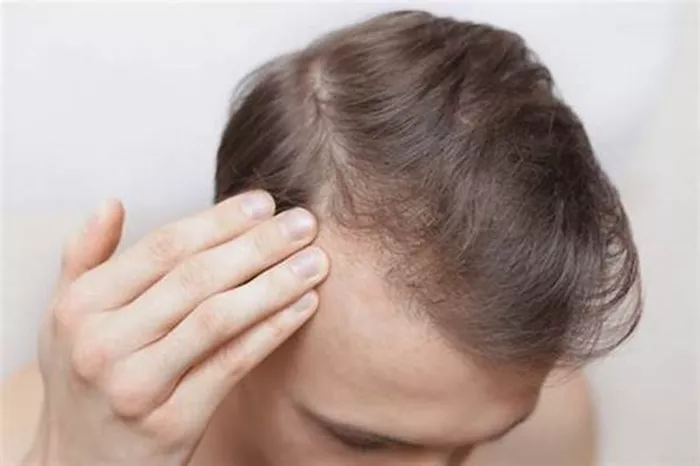Helmets are essential for protecting your head during various activities such as biking, motorcycling, and sports. However, wearing a helmet regularly can lead to hair loss. This issue arises due to factors like friction, sweating, and the overall strain helmets can place on hair follicles. This article provides practical advice on how to prevent hair loss while wearing a helmet, ensuring you maintain both your safety and hair health.
Understanding Hair Loss from Helmets
The Mechanics of Hair Loss
When you wear a helmet, your hair is subjected to friction. This constant rubbing can weaken hair strands and cause breakage. Additionally, the pressure exerted by a helmet can reduce blood flow to the scalp, affecting hair growth. Sweat accumulation under the helmet can create an environment conducive to bacterial growth, which can lead to scalp issues and hair loss.
Common Signs of Helmet-Induced Hair Loss
Thinning Hair: Noticeable reduction in hair volume.
Hair Breakage: Increased instances of hair strands breaking.
Scalp Irritation: Itchiness or redness on the scalp.
Hair Falling Out: More hair than usual on your brush or pillow.
See also: Does PTSD Cause Hair Loss?
Preventative Measures
Choosing the Right Helmet
Select a Helmet with Proper Fit
Ensure your helmet fits well but isn’t too tight. A helmet that’s too snug can cause excessive friction and pressure. Look for helmets with adjustable straps and padding to customize the fit.
Opt for a Lightweight Helmet
Heavier helmets exert more pressure on your scalp. A lightweight helmet reduces the strain on your hair follicles.
Ventilated Helmets
Choose helmets with good ventilation. Ventilated helmets allow air to circulate, reducing sweat buildup and keeping your scalp cool.
Hair Care Tips
Maintain Clean Hair
Wash your hair regularly to remove sweat, dirt, and oil. Clean hair is less likely to harbor bacteria that can cause scalp issues.
Condition Your Hair
Use a good conditioner to keep your hair moisturized. Conditioning helps reduce friction between your hair and the helmet.
Use a Silk or Satin Scarf
Before putting on your helmet, cover your hair with a silk or satin scarf. These materials reduce friction and prevent hair breakage.
Avoid Tight Hairstyles
Avoid hairstyles that pull on your hair when wearing a helmet. Loose styles like braids or a low ponytail are less damaging.
Scalp Care
Keep Your Scalp Clean
A clean scalp is essential for healthy hair growth. Use a gentle shampoo to keep your scalp free from sweat and dirt.
Exfoliate Your Scalp
Regular exfoliation removes dead skin cells and promotes better blood circulation. Use a scalp scrub or a brush designed for scalp exfoliation.
Moisturize Your Scalp
Use a lightweight, non-greasy scalp moisturizer to keep your scalp hydrated. A well-moisturized scalp is less prone to irritation and flaking.
Helmet Hygiene
Clean Your Helmet Regularly
Regularly clean the interior of your helmet to remove sweat and bacteria. Use a mild soap and water solution or specialized helmet cleaners.
Replace Helmet Padding
Over time, helmet padding can become worn and harbor bacteria. Replace the padding periodically to ensure it remains clean and effective.
Additional Tips
Take Helmet Breaks
Whenever possible, give your hair and scalp a break from the helmet. This reduces the prolonged pressure and allows your scalp to breathe.
Use Anti-fungal Products
If you’re prone to scalp infections, use anti-fungal shampoos or sprays. These products help keep your scalp healthy and free from infections.
Massage Your Scalp
Regular scalp massages improve blood circulation, promoting healthy hair growth. Use your fingertips to gently massage your scalp for a few minutes each day.
Diet and Lifestyle
Balanced Diet
Eat Protein-Rich Foods
Protein is essential for hair health. Include lean meats, fish, eggs, and legumes in your diet.
Include Vitamins and Minerals
Ensure your diet includes vitamins and minerals like Vitamin A, Vitamin E, Zinc, and Iron. These nutrients are crucial for hair growth and health.
Stay Hydrated
Drink Plenty of Water
Hydration is key for overall health, including hair health. Drink at least 8 glasses of water a day.
Reduce Stress
Practice Relaxation Techniques
Stress can contribute to hair loss. Engage in relaxation techniques like yoga, meditation, or deep breathing exercises to manage stress levels.
Get Adequate Sleep
Ensure you get enough sleep each night. Lack of sleep can affect your overall health and contribute to hair loss.
Consulting a Professional
When to See a Doctor
Persistent Hair Loss
If you notice persistent hair loss despite taking preventive measures, consult a healthcare professional. They can determine if there’s an underlying condition causing your hair loss.
Professional Treatments
Consider Hair Growth Treatments
There are several treatments available for hair growth, including topical treatments like Minoxidil and prescription medications. Consult a doctor to explore these options.
Scalp Treatments
Professional scalp treatments can improve scalp health and promote hair growth. These treatments include scalp massages, laser therapy, and platelet-rich plasma (PRP) therapy.
Conclusion
Wearing a helmet is crucial for safety, but it doesn’t have to come at the cost of your hair health. By following these preventive measures and maintaining good hair and scalp care practices, you can protect your hair while wearing a helmet. Remember to choose the right helmet, keep it clean, and take care of your hair and scalp. If you experience persistent hair loss, consult a professional for advice and treatment options. With the right approach, you can enjoy your activities safely without compromising your hair.
You May Be Interested In

